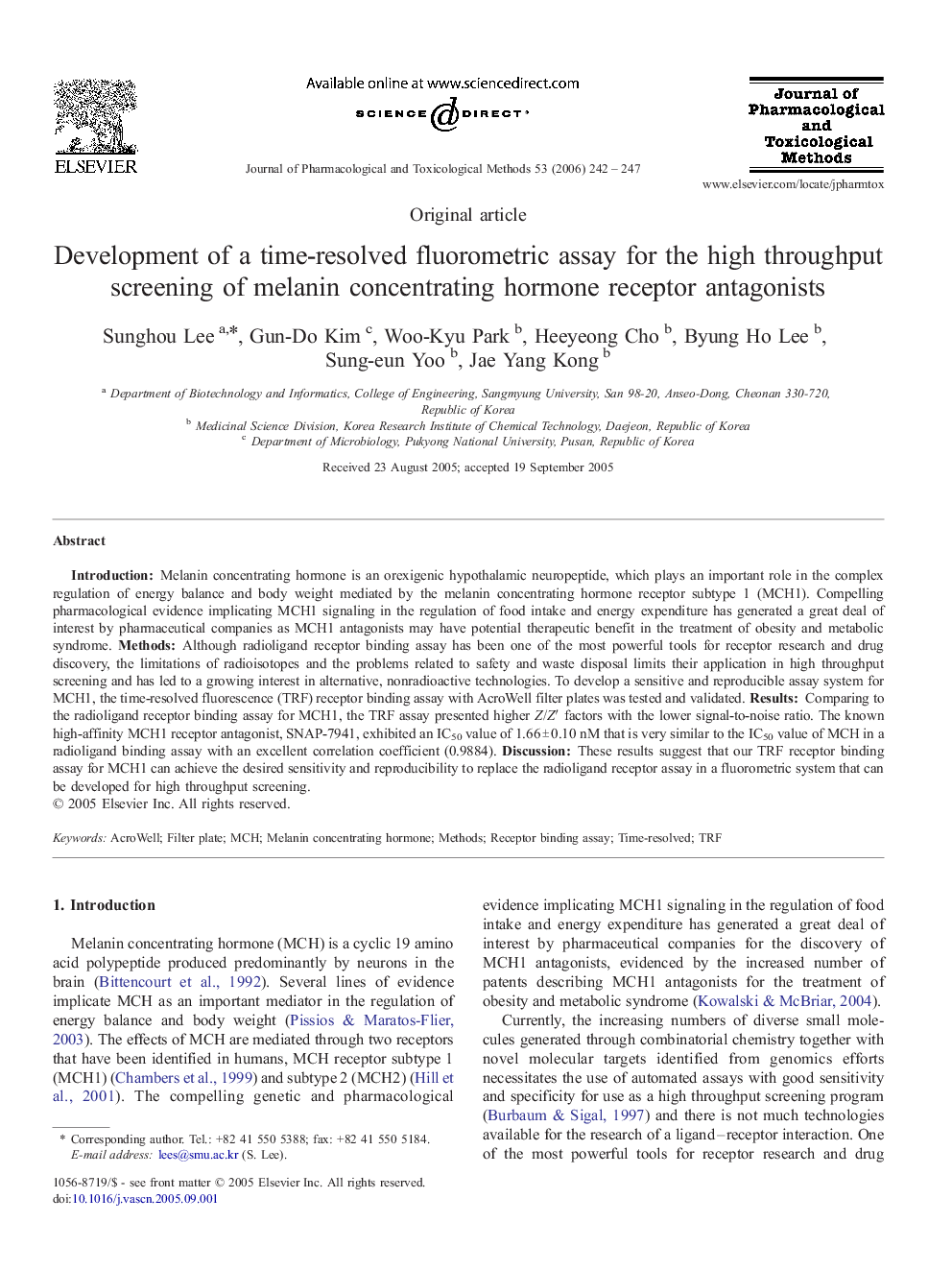| Article ID | Journal | Published Year | Pages | File Type |
|---|---|---|---|---|
| 2550311 | Journal of Pharmacological and Toxicological Methods | 2006 | 6 Pages |
IntroductionMelanin concentrating hormone is an orexigenic hypothalamic neuropeptide, which plays an important role in the complex regulation of energy balance and body weight mediated by the melanin concentrating hormone receptor subtype 1 (MCH1). Compelling pharmacological evidence implicating MCH1 signaling in the regulation of food intake and energy expenditure has generated a great deal of interest by pharmaceutical companies as MCH1 antagonists may have potential therapeutic benefit in the treatment of obesity and metabolic syndrome.MethodsAlthough radioligand receptor binding assay has been one of the most powerful tools for receptor research and drug discovery, the limitations of radioisotopes and the problems related to safety and waste disposal limits their application in high throughput screening and has led to a growing interest in alternative, nonradioactive technologies. To develop a sensitive and reproducible assay system for MCH1, the time-resolved fluorescence (TRF) receptor binding assay with AcroWell filter plates was tested and validated.ResultsComparing to the radioligand receptor binding assay for MCH1, the TRF assay presented higher Z/Z′ factors with the lower signal-to-noise ratio. The known high-affinity MCH1 receptor antagonist, SNAP-7941, exhibited an IC50 value of 1.66 ± 0.10 nM that is very similar to the IC50 value of MCH in a radioligand binding assay with an excellent correlation coefficient (0.9884).DiscussionThese results suggest that our TRF receptor binding assay for MCH1 can achieve the desired sensitivity and reproducibility to replace the radioligand receptor assay in a fluorometric system that can be developed for high throughput screening.
